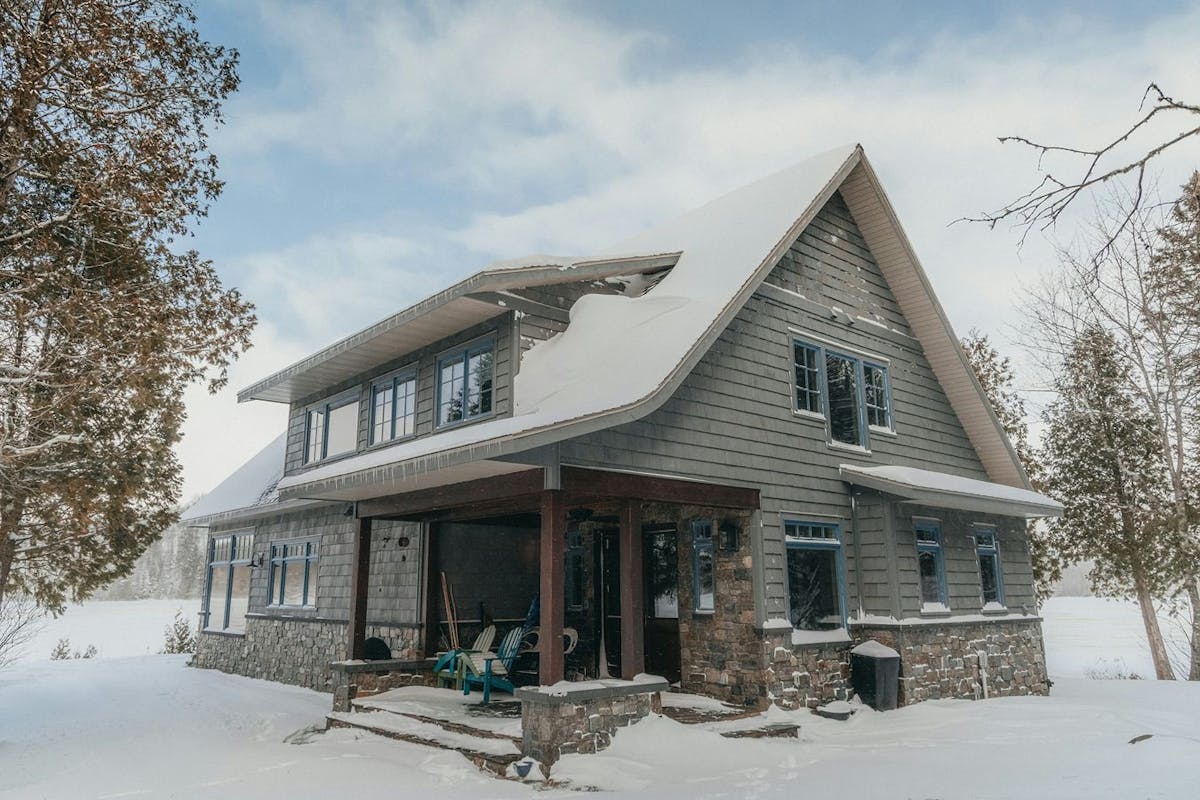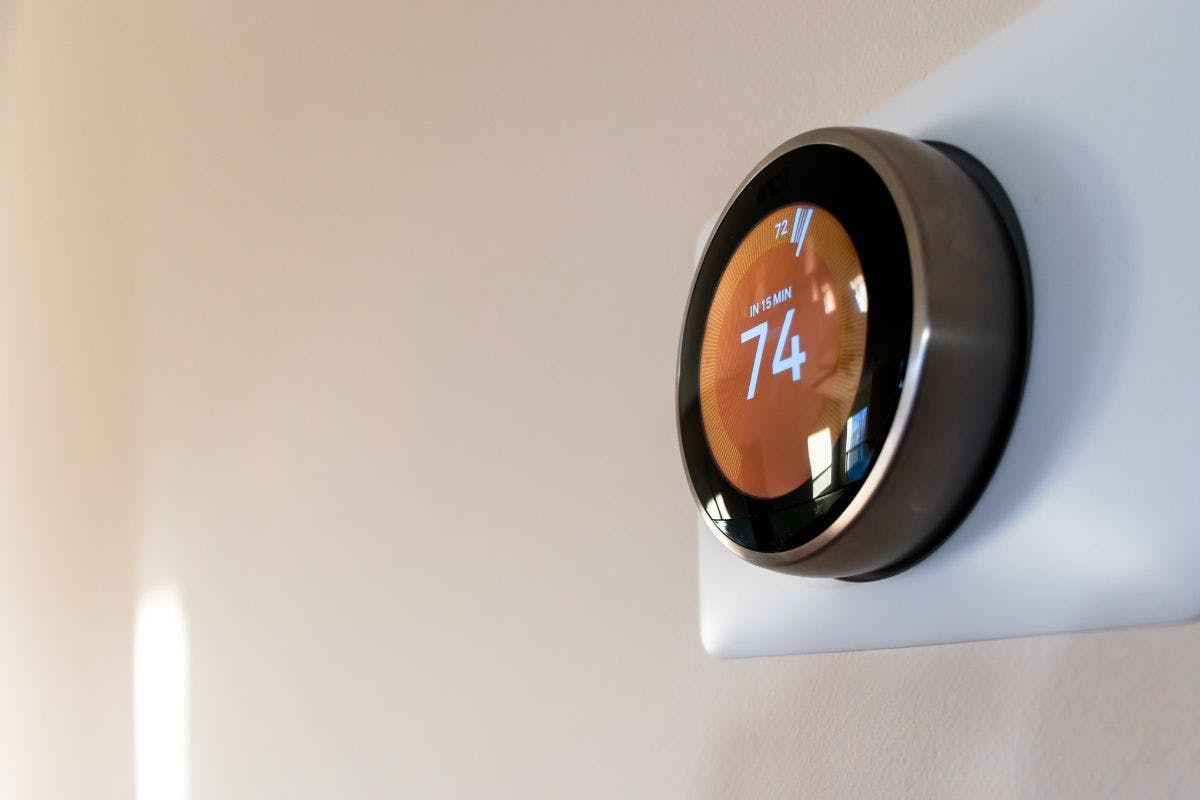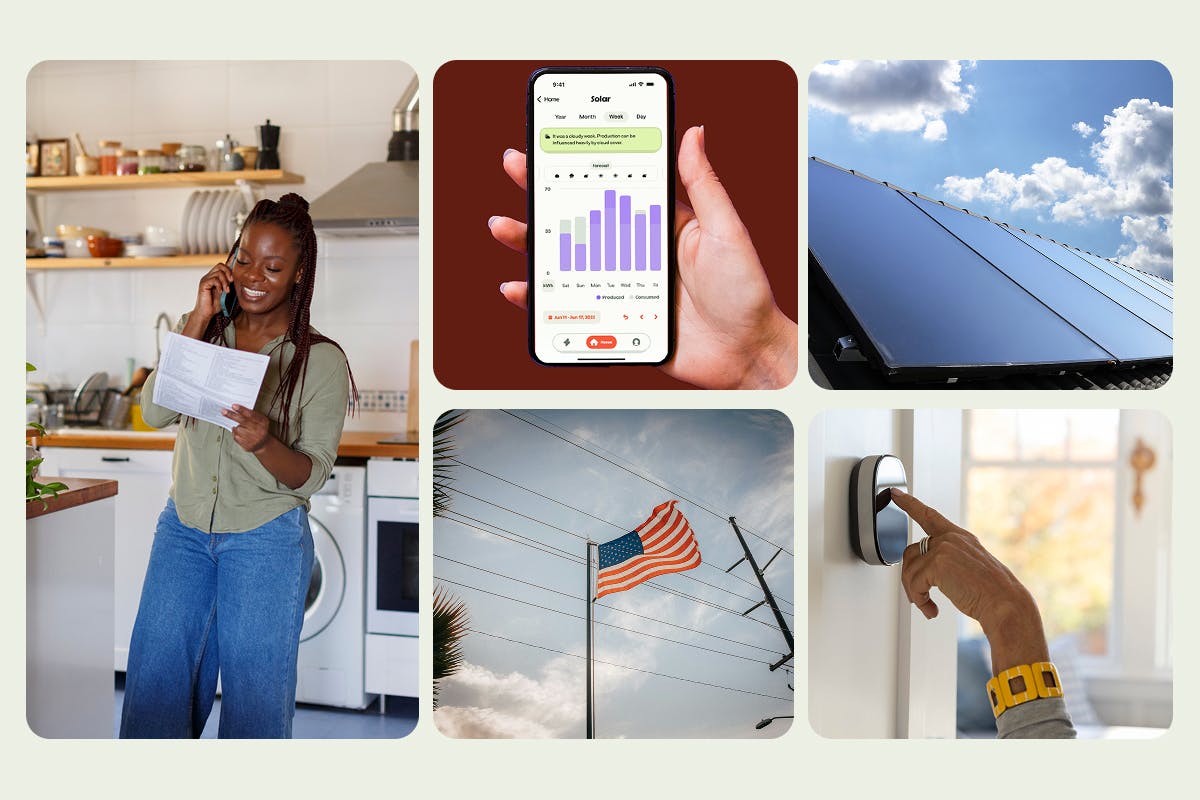13 Winter Energy Saving Tips
Last edited

Author
Andrew Giermak
Solar and Electrification Writer and Editor

Editor
Andrew Blok
Electrification and Solar Writer and Editor

Are you used to seeing skyrocketing utility bills each winter? You don’t need to freeze in your home just to save. A few projects and winter energy saving tips can save you money and keep you comfy and cozy this winter.
Check your thermostat settings. Use natural sunlight smartly in your home. Check the insulation in your attic. Run your ceiling fan (yes, to heat instead of cool). Try out a few of our ideas on how to save energy this winter and lower your energy bills.
See how much you can save with home energy changes
Set your thermostat for winter
This is one of the most important winter energy saving tips. The Department of Energy reports your heating system can consume nearly 30% of your energy consumption.
You can use less electricity to heat your home by adjusting your thermostat settings to the optimal temperatures for the season:
- 68 °F during the day (if someone is home)
- 65 °F during the day (if no one is home)
- 65 °F at night
- 60 °F if you leave home for vacation
While those recommendations might seem too cool at first glance, you can acclimate to them by changing your thermostat by 1 °F per day until you reach the desired setting. When combined with the rest of this list, you and your family will still feel comfortable, and you’ll use less energy.
Use a programmable or smart thermostat
Using, or switching to, a programmable thermostat or a smart thermostat has multiple energy-saving benefits.
You can enter in the basic settings we provided above — 68 °F during daytime hours and 65 °F during nighttime hours — and then you don’t have to think about changing the thermostat on your own. You’re automatically setting yourself up for success, which can quickly translate to lower usage and energy savings over time.
If you have a higher-tech thermostat, you can create several schedules, or let the smart functions set the best schedule and settings. You can also use those apps to modify your thermostat.
If you are using the new Palmetto app, you can earn discounts to save on energy-efficient products like an ecobee smart thermostat.
Use curtains to your advantage
It’s really this simple:
- Open your curtains during the day to let in sunlight
- Close your curtains at night to prevent heat loss
Your curtains really can help you regulate the temperature of your home. Even in the winter cold, solar energy provides heat. Tightly-fitting window coverings can reduce heat loss through windows by about 40%, equalling about 10% in heating cost savings for a home according to the US Department of Energy.
It’s what people did for centuries, even before the arrival of central heating, and it works just as well now as it did back then.
Change your ceiling fan’s direction
Flipping the direction switch on your ceiling fans recirculates the warm air that rises to the ceiling.
In winter mode, the fan blades spin in a direction that first draws air up into the ceiling and pushes that air into the corners of the room. This sends warm air back down to your sweater-clad family members, which means you don’t need to raise the thermostat temperature as high.
One easy tip to remember when to change directions on your fans: Flip the switch when daylight saving time changes!
Close doors and vents
The less you heat up empty rooms in your home, the more efficiently you can heat the rooms people actually use.
You should encourage your family to close the doors to bedrooms whenever they aren’t in them. If you have an unused guest room, you should also close those HVAC vents and only open them when someone is planning to stay there.
See how much you can save with home energy changes
Lower your water heater’s temperature
Your water heater should be set at 120 °F. Your home uses more energy than you’d expect when heating up water. Water heating accounts for about 18% of an average home's energy use according to the Department of Energy. Any higher than 120 °F and you’re just wasting that energy.
Also, for safety reasons, there is no reason the hot water you use to wash your hands and take showers should be hotter than 120 °F.
Change your furnace or heat pump filter
Your air filter should be regularly changed. The dirtier it is, the harder your furnace or heat pump works to heat your home. The more energy used, the higher your bills.
It depends on the size of your filter, but a good rule of thumb is to change 1-2 inch filters every 3 months, 4-inch filters every 6 months, and 5-inch filters every 12 months.
If you’re unsure, check with your furnace or heat pump manufacturer for recommendations on how often you should change the filter. Once you have that information, set a reminder on your calendar.
The Palmetto app store also offers smart air filters. You can earn discounts on air filters and other products when you take action to save energy.
Check your door and window seals
Once you’ve heated the air in your home, you need to reduce heat loss. To do this, you need to check all your external-facing windows and doors, looking specifically for places where your weatherstripping is cracked, broken, or totally missing and causing air leaks.
- Doors: Remove faulty weatherstripping and install a fresh seal.
- Windows: Add a fresh layer of silicone caulk around the trim of the window.
Switch to LED lights
Incandescent light bulbs waste 90% of the energy they consume. They turn electricity into heat more than light. Thankfully, there are better alternatives!
While CFL bulbs are better than incandescent, LED light bulbs are far superior in that they use nearly 90% of the energy they consume, and can produce light that’s similar in temperature to incandescent bulbs.
Not only are LED light bulbs more energy efficient, but they also have a much longer lifespan, by 25-50 times, which will save you money over time as you don’t have to replace them as often.
Get an HVAC tuneup
Even if you’re saving energy in a bunch of ways, you still need to use your heater in winter to keep your house warm. The best way to heat your home efficiently and save energy this winter is to hire a technician to check your heating, ventilation, and air conditioning (HVAC) system to ensure everything is in tip-top condition.
The money you spend on HVAC maintenance will keep your HVAC system from running as hard to heat your home. If you lease your HVAC system (through the Palmetto Comfort Plan, for example), regular maintenance ahead of the cooling season may be included.
Add attic insulation
You’ve fixed your windows and doors so warm air doesn’t escape through those openings, but now it’s time to help your home retain the maximum amount of heat by adding more insulation to your attic.
Energy Star has created a helpful guide for recommended insulation levels based upon your location in the US. You can install the insulation yourself or hire a home improvement professional.
Check your chimney
Your chimney is a hole in your ceiling that may be letting warm air out and cool air in if it’s not properly maintained.
We recommend hiring a licensed technician to complete one of two steps:
- If you never use your chimney, you should just close it up and seal it so air can no longer pass through.
- If you have plans to use your chimney in the future, you should ensure it’s in proper working order for winter, and then learn how to maintain it during the summer.
Wear layers indoors
Do you want to maximize the full benefits of those lower thermostat temperatures we mentioned earlier? You can re-think what you wear inside the house.
Adding warm socks, a sweater, or a long-sleeved shirt while indoors helps you stay warm by trapping warm air against the skin.
Save energy winter, spring, summer, and fall
Lowering your winter energy bills starts by using less energy and using it more effectively. The goal of winter home energy saving tips is to start with actions that lower your usage, but don’t upset your current lifestyle and habits.
You can learn more about how to save energy this winter and year-round with the Palmetto app. Looking for capable and efficient heating and cooling for your home? Check out the Palmetto Comfort Plan. Beyond saving energy, you can generate your own with home solar panels. Estimate what you could save today.
See what home electrification can do for you:
Frequently Asked Questions
What’s the easiest way to save energy in the winter?
The easiest and most effective way to save energy and money in the winter is to run your heating less. The simplest winter energy saving tips to use less heat are to wear warmer clothes, reverse your ceiling fan, and set your thermostat to a lower temperature when no one’s home or everyone’s asleep.
Can a heat pump save you energy in the winter?
A heat pump is typically three to four times (COP 3.0-4.0) more energy efficient than other electric and gas heating systems. You can save energy year-round with a heat pump for heating and cooling.
Are space heaters efficient?
Space heaters are less efficient than solutions like a heat pump. If you’re using space heaters too often or in multiple places in your home, it is likely not efficient. Using a space heater because you want heat in one room instead of running heat throughout your home may be more efficient. Using a space heater for a short time instead of turning up the thermostat for the whole house may also be more efficient.


